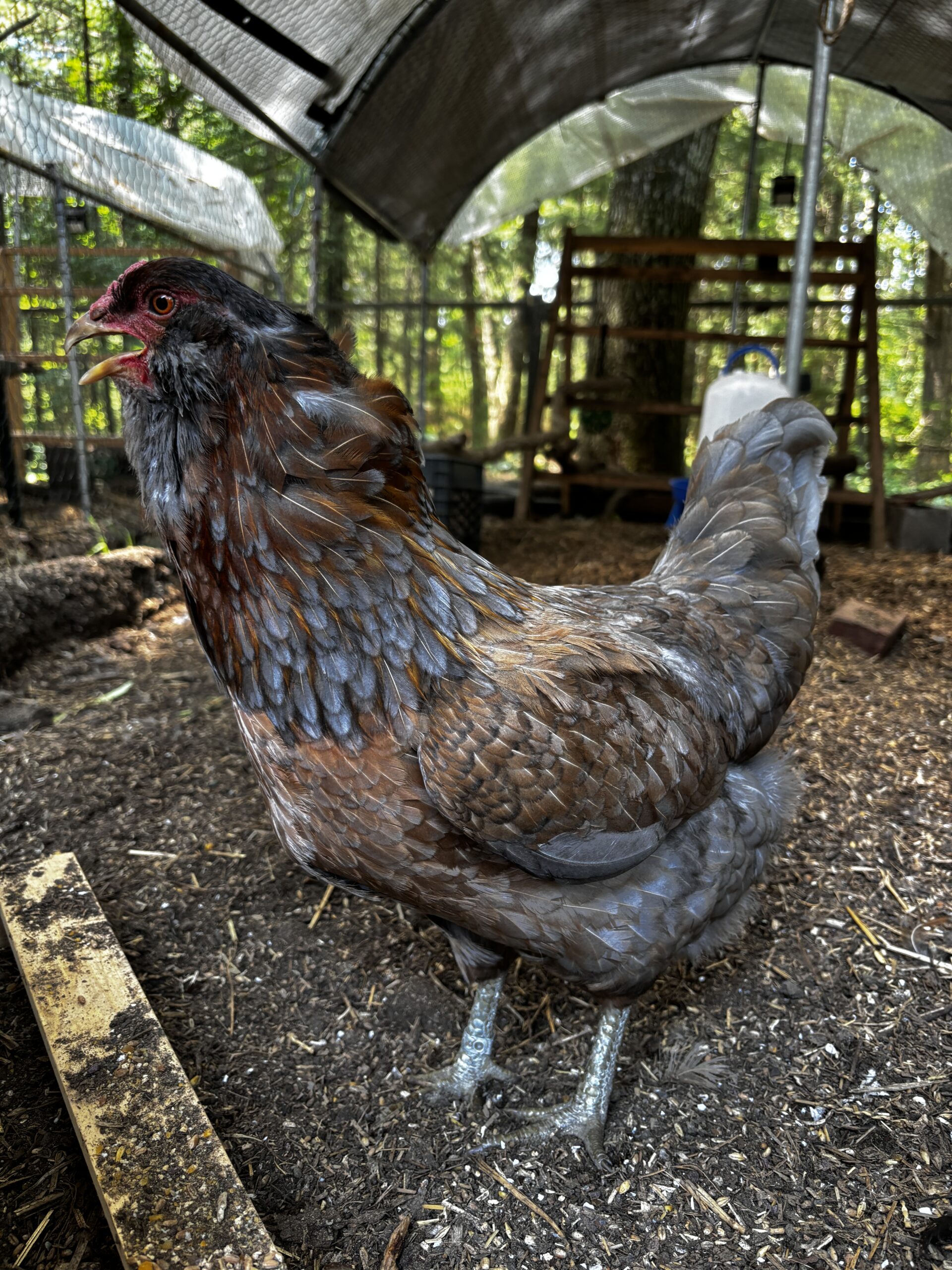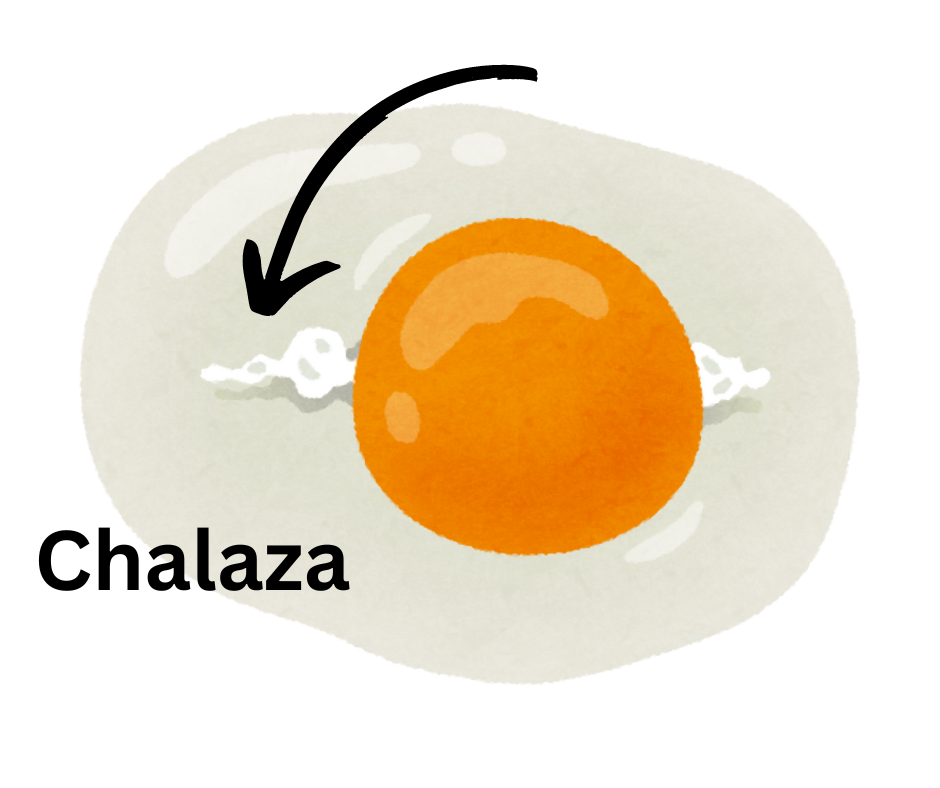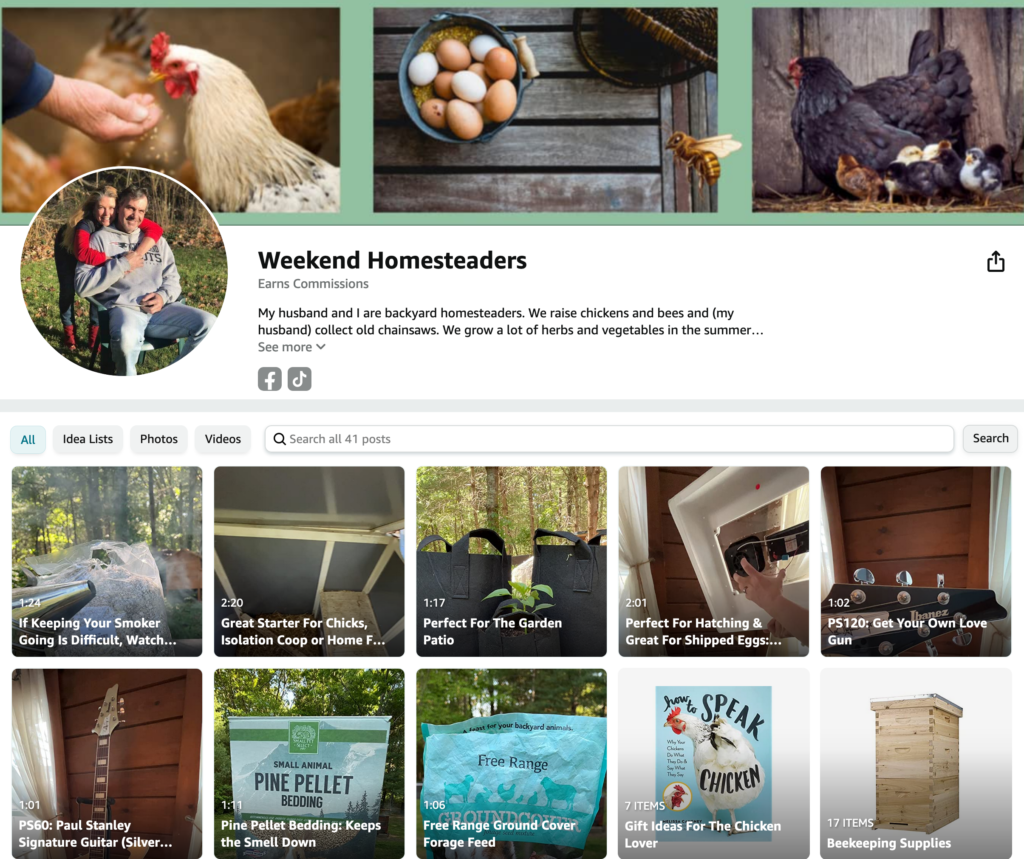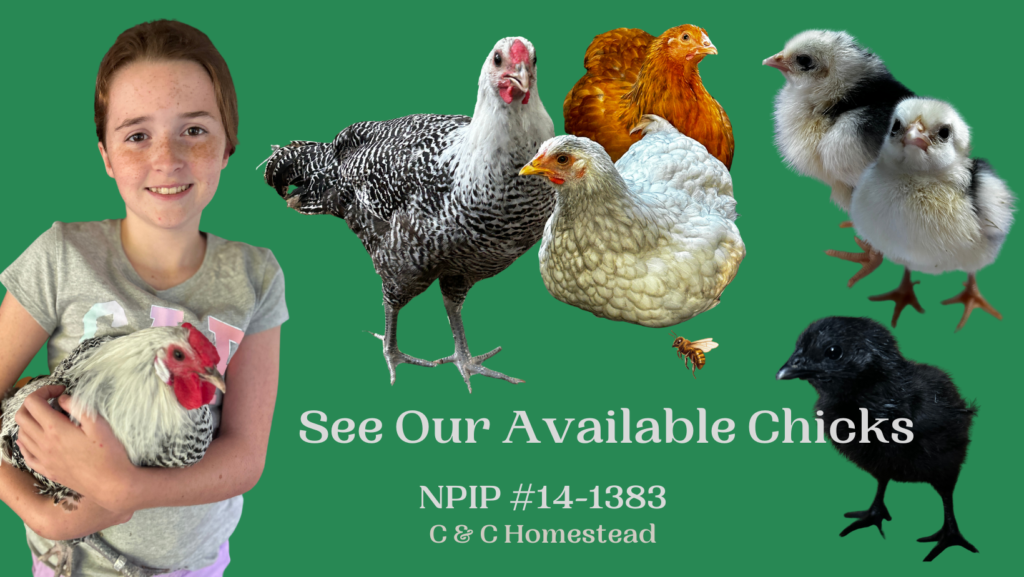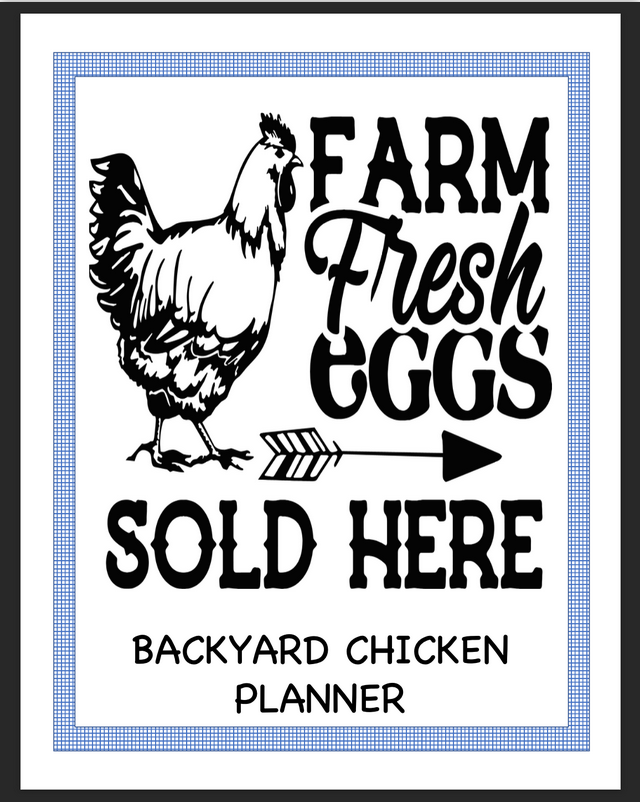Balancing Corporate & Homesteading Lifestyles
Why Are Backyard Eggs Often More Expensive Than Store Bought Eggs?
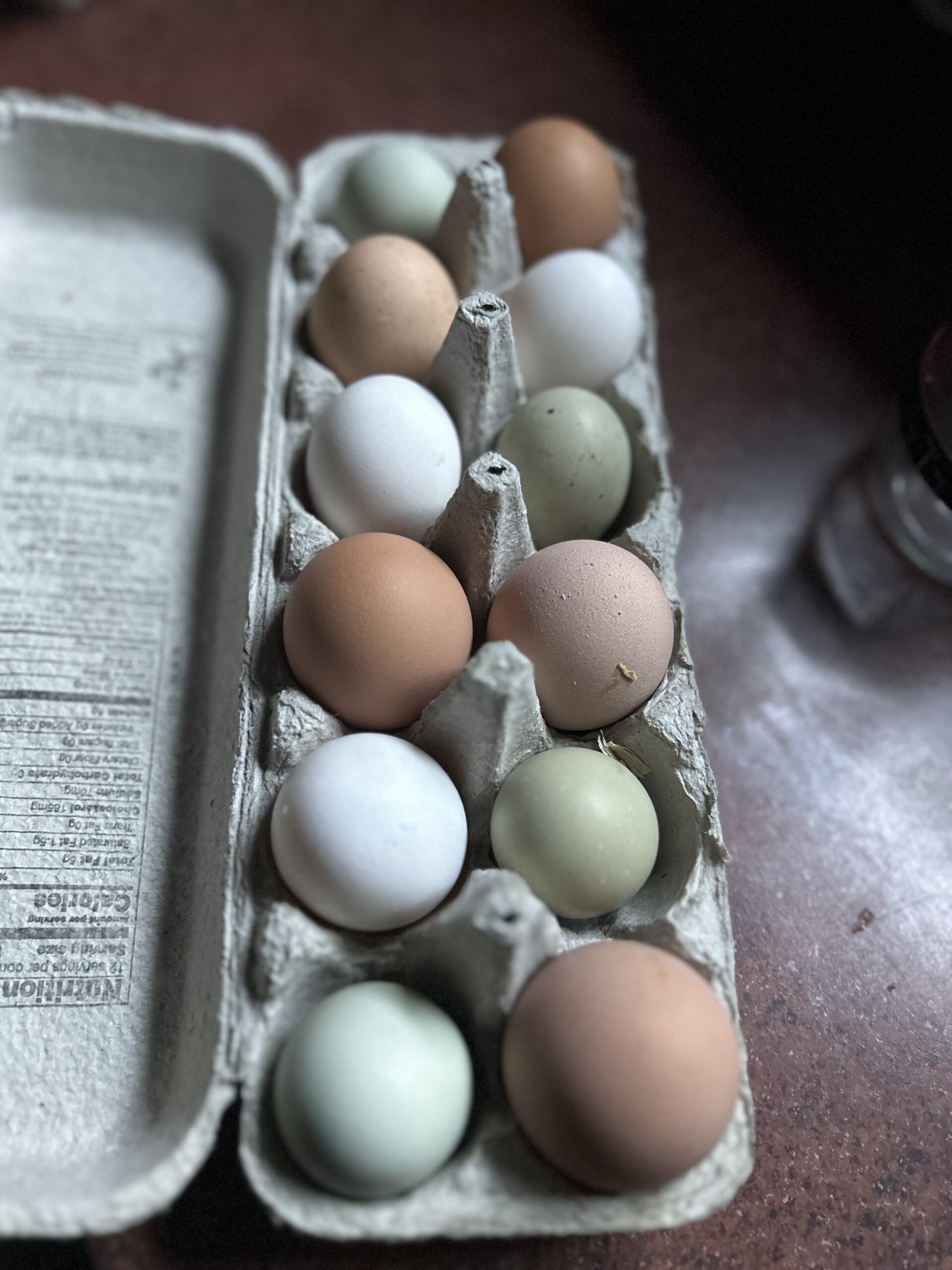
Here are the primary reasons for the cost difference:
1. Scale of Production
- Small Scale vs. Industrial Scale: Backyard egg producers operate on a much smaller scale compared to large commercial farms. Industrial farms benefit from economies of scale, allowing them to produce eggs more cheaply by spreading costs over a larger number of eggs.
2. Feed and Maintenance Costs
- Higher Feed Costs: Backyard chicken keepers often purchase higher-quality feed and supplements for their hens. This feed is generally more expensive than the bulk feed used in industrial farms.
- Individual Care: Backyard chickens typically receive more personalized care, which can include specialized diets, regular health checks, and treatments that add to the overall cost.
3. Housing and Equipment
- Custom Housing: Backyard chickens are usually housed in custom-built or purchased coops that are designed to provide ample space, comfort, and protection. These coops and the necessary equipment, such as feeders and waterers, represent a significant initial investment.
- Enrichment: Providing chickens with enrichment items like perches, dust baths, and foraging opportunities also contributes to the higher costs.
4. Labor and Time
- Manual Labor: Raising backyard chickens involves significant manual labor, including daily feeding, cleaning, egg collection, and coop maintenance. Unlike commercial operations that use automated systems, backyard farmers invest more time and effort into the care of each bird.
- Small Batch Processing: Processing and packaging eggs on a small scale is more labor-intensive and costly per egg compared to automated commercial systems.
5. Welfare Standards
- Higher Welfare Standards: Backyard chickens are generally kept in conditions that far exceed the welfare standards of commercial farms. They often have access to outdoor spaces, are free to roam and forage, and are not subjected to the same stressful conditions as factory-farmed hens.
- Natural Behaviors: Allowing chickens to express natural behaviors, such as nesting, perching, and dust bathing, requires more space and resources, adding to the cost.
6. Regulations and Certification
- Regulatory Compliance: Meeting local regulations for selling eggs, including health inspections and certification, can incur additional costs for backyard producers.
- Organic and Pasture-Raised Certifications: If backyard egg producers seek organic or pasture-raised certifications, the cost of meeting these stringent standards is often passed on to the consumer.
Benefits of Backyard Eggs
Despite the higher cost, many consumers are willing to pay a premium for backyard eggs due to the following benefits:
- Better Flavor and Nutrition: Many people find that backyard eggs taste better and have a richer nutritional profile compared to store-bought eggs.
- Animal Welfare: Buying backyard eggs supports more humane treatment of chickens, as they are generally raised in more natural and comfortable conditions.
- Local and Sustainable: Purchasing backyard eggs supports local farmers and promotes sustainable agricultural practices.
The higher price of backyard eggs reflects the true cost of ethical and sustainable egg production, prioritizing animal welfare and quality over mass production and profit.
Click here to learn more about chicken abuse in commercial farming and production practices.
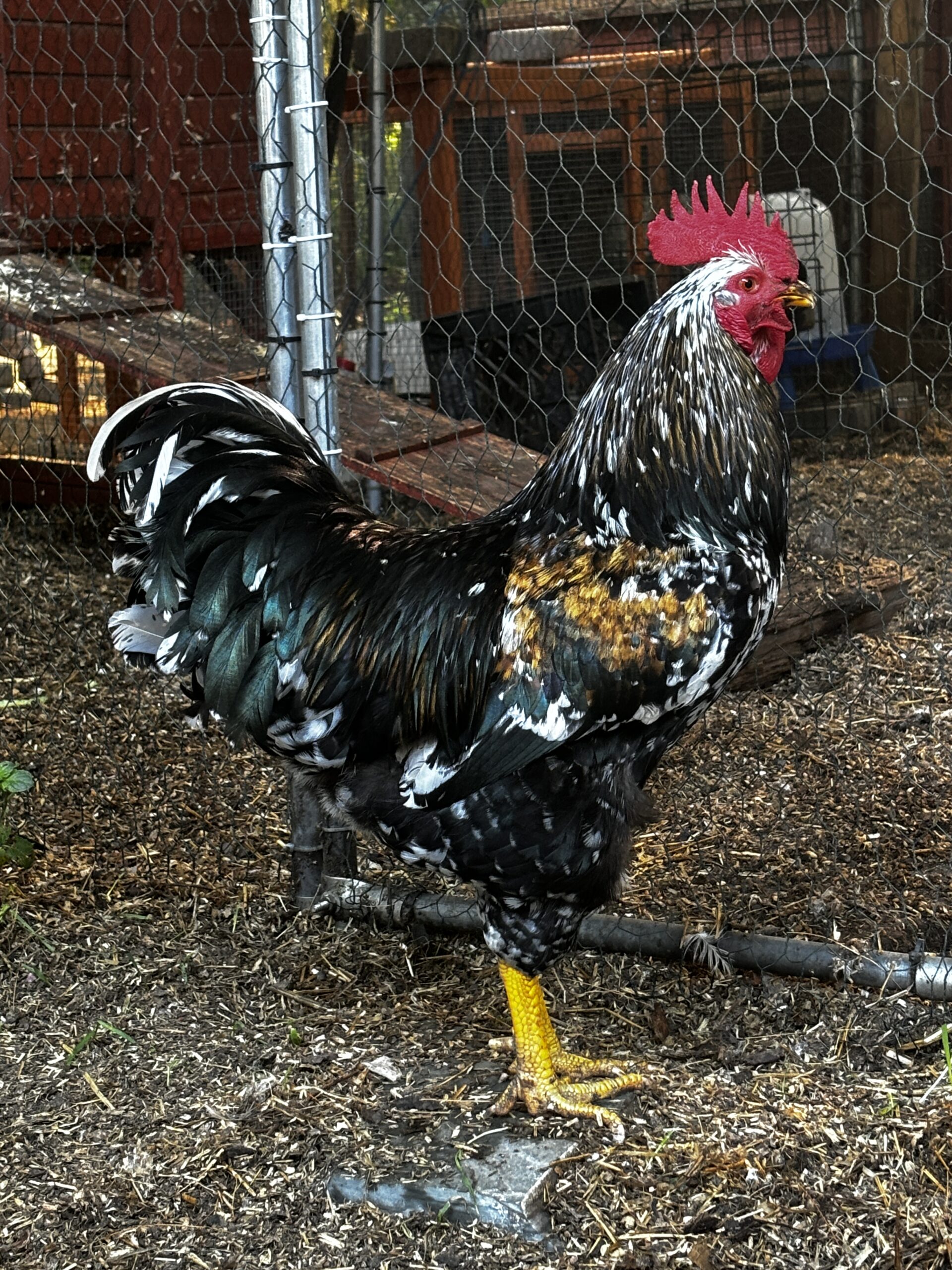
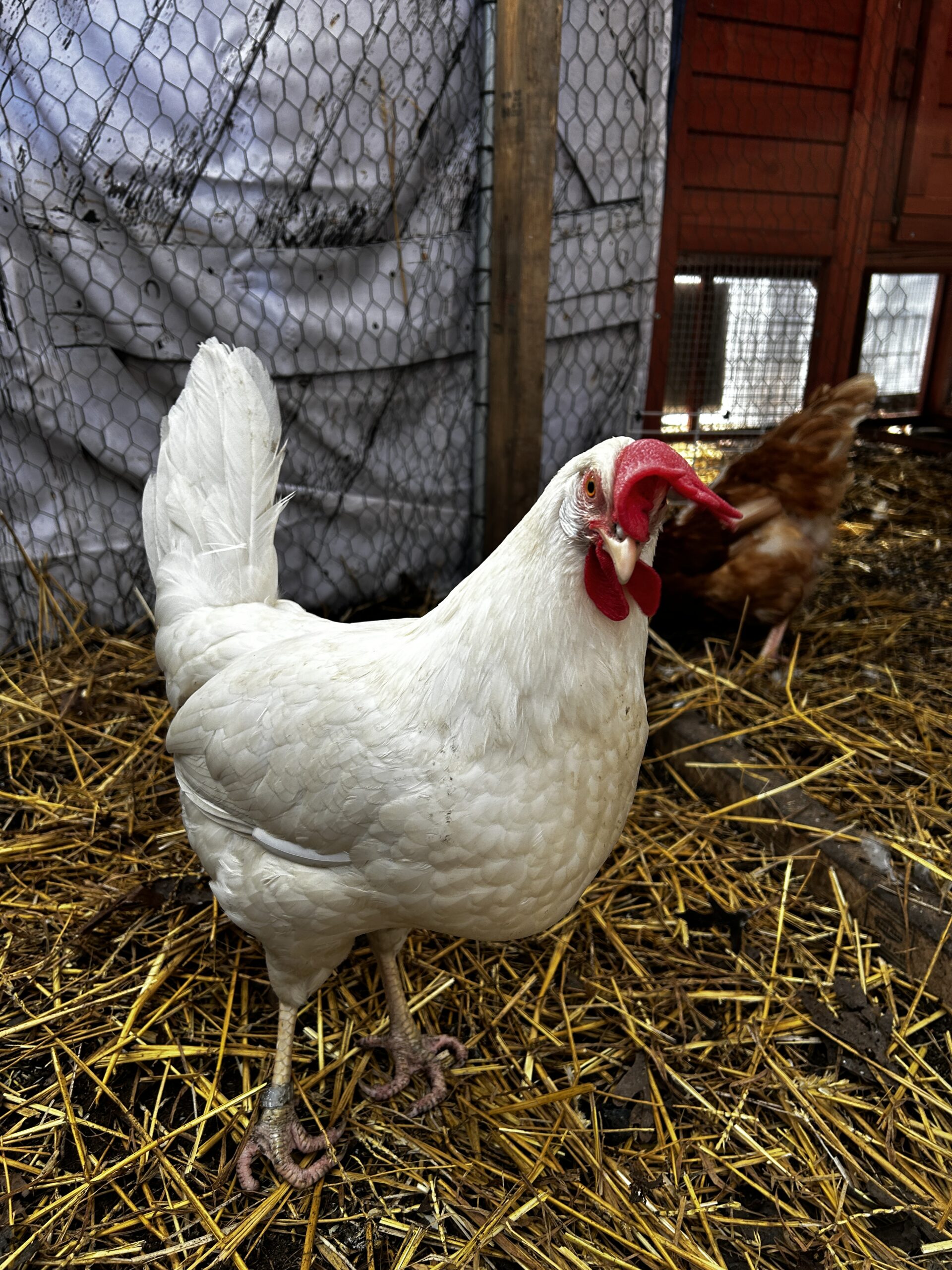
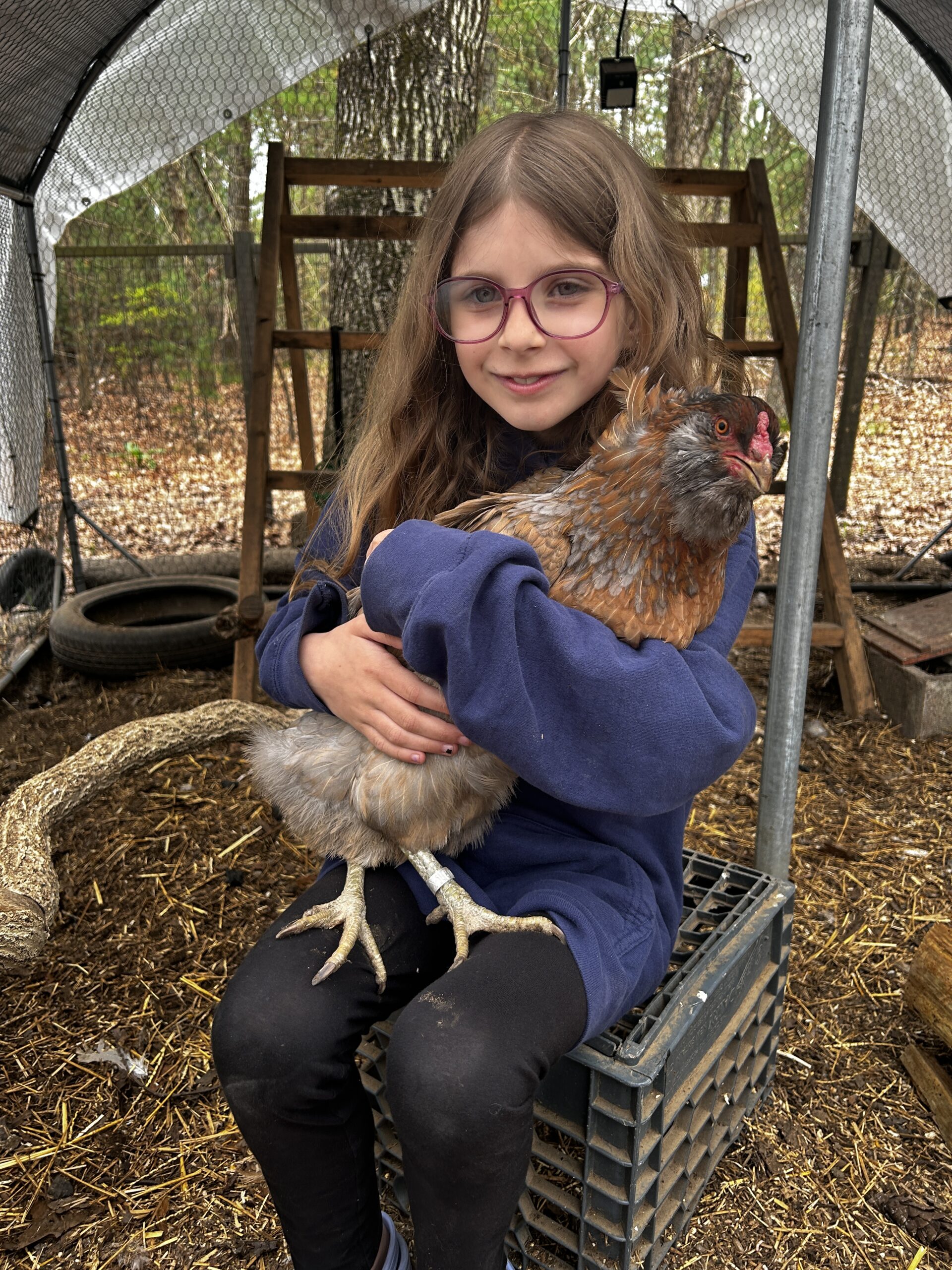
Understanding Chicken Abuse and How to Help

Chickens are among the most abused animals in the world, particularly within the industrial farming system. Their mistreatment spans from hatcheries to slaughterhouses, often involving cruel practices that prioritize efficiency and profit over animal welfare. Here’s an in-depth look at the various forms of chicken abuse and practical steps individuals can take to help improve their lives.
Broiler chickens, bred to grow rapidly, often suffer from severe health problems like heart disease, lameness, and the inability to support their own weight, with 9 billion broilers slaughtered annually in the U.S. Layer hens, bred to produce over 300 eggs annually, frequently endure osteoporosis and reproductive diseases due to intensive farming practices, contributing to the production of over 100 billion eggs each year. The average person in the U.S. consumes about 280 eggs annually, highlighting the widespread impact of these practices.
Hatcheries
Mass Production: Chicks in hatcheries are hatched in large, industrial incubators designed to produce thousands of birds at a time. These facilities prioritize efficiency, often at the expense of animal welfare. Once hatched, chicks are treated as commodities, handled roughly as they are sorted, vaccinated, and prepared for transport to farms. This process can be stressful and harmful, as the sheer scale and speed of operations leave little room for gentle handling.
Male Chicks in the Egg Industry: In the egg production industry, male chicks are considered economically unviable since they do not lay eggs and are not bred to grow quickly enough for meat production. As a result, male chicks are often culled shortly after hatching. Common methods of culling include maceration (grinding alive) or suffocation, practices that are widely criticized for their cruelty. Efforts are underway in some regions to develop more humane alternatives, such as in-ovo sexing technology, which can determine the sex of the chick before it hatches, allowing male eggs to be used differently.



Factory Farming
Overcrowding
In factory farms, chickens are typically packed into extremely tight spaces, with thousands of birds housed together in large sheds. Each bird often has less space than a sheet of paper to move around. This intense overcrowding leads to several serious issues:
High Stress: The constant proximity to so many other birds causes chronic stress, which weakens their immune systems and makes them more susceptible to illness.
Aggression: Due to the lack of space, chickens are unable to establish natural pecking orders. This unnatural environment leads to increased aggression and pecking among birds, sometimes resulting in injuries or death.
Spread of Disease: The close quarters make it easy for diseases to spread rapidly through the flock. Respiratory issues, bacterial infections, and parasites are common problems, often exacerbated by poor ventilation and high ammonia levels from accumulated waste.
Battery Cages
Egg-laying hens in factory farms are frequently confined to battery cages, small wire enclosures that severely restrict their movement. The conditions in battery cages are particularly harsh:
Space Restrictions: Each cage typically houses multiple hens, giving each bird less space than a standard piece of paper. The hens cannot spread their wings, turn around comfortably, or engage in most natural behaviors.
Physical Suffering: The wire flooring can cause foot injuries and deformities. Constant friction against the cage can lead to feather loss and skin abrasions. The lack of movement and exercise often results in weakened bones and osteoporosis.
Mental Distress: The inability to perform natural behaviors causes severe mental stress and frustration, leading to abnormal behaviors like feather pecking and cannibalism.
Lack of Enrichment
In these barren environments, chickens are deprived of opportunities to engage in behaviors that are essential for their well-being:
Foraging: In natural settings, chickens spend a significant amount of time foraging for food. Factory farm conditions rarely provide materials like straw or soil for scratching and pecking, which are vital for their mental stimulation and natural behavior.
Perching: Chickens have a natural instinct to perch, especially at night. In factory farms, they are often denied perches, forcing them to sleep on the hard, often filthy floors. This deprivation can cause stress and discomfort.
Dust Bathing: Dust bathing is a critical behavior for chickens, helping them maintain feather health and hygiene by removing parasites. The absence of dust baths in factory farms leads to poor feather condition and increased parasite load, causing significant distress and health issues.
Physical Mutilations
Debeaking: To prevent pecking injuries in overcrowded conditions, chicks often undergo a procedure known as debeaking or beak trimming, where the tips of their beaks are cut off using a hot blade, infrared beam, or electric current. This process is typically performed without anesthesia and can cause both acute pain at the time of the procedure and chronic pain as the beak heals improperly. The beak is a highly sensitive organ used for eating, exploring, and social interactions, and its mutilation can lead to long-term suffering, difficulty eating, and behavioral issues such as reduced pecking and preening activities.
Toe Clipping and De-Spurring: Toe clipping and de-spurring are other common mutilations aimed at reducing injuries in the densely packed environments of factory farms. Toe clipping involves cutting off part of the chicks' toes to prevent scratching injuries, while de-spurring removes the spurs from roosters to reduce harm during aggressive encounters. Both procedures are usually done without pain relief, causing immediate and lasting discomfort. These mutilations impair the birds' natural behaviors, such as scratching the ground for food or defending themselves, and can lead to infections and long-term mobility issues.
Wing Clipping: In some cases, chickens may have their wings clipped to prevent them from flying. While less invasive than other procedures, wing clipping still limits their natural behavior and ability to escape from perceived threats, contributing to their overall stress and frustration.
Caponization: Caponization is a procedure where young roosters are castrated to improve meat quality. This invasive surgery is often performed without anesthesia, leading to significant pain and risk of infection. The procedure can also alter the birds' behavior and growth patterns, causing further distress.



Rapid Growth and Health Issues
Broiler Chickens
Chickens raised for meat, known as broilers, are bred to grow at an extraordinarily rapid rate. This accelerated growth is intended to maximize meat production in the shortest possible time, usually within 5 to 7 weeks. However, this unnatural growth rate comes with severe health and welfare problems:
Heart Disease
- Ascites: Rapid growth leads to high metabolic rates and oxygen demands, which can cause ascites, a condition where fluid accumulates in the abdomen due to heart failure.
- Sudden Death Syndrome: This syndrome is common in broilers and is often caused by cardiac arrhythmias, where the heart fails to pump blood effectively, leading to sudden death.
Lameness and Joint Pain
- Skeletal Abnormalities: The rapid muscle growth outpaces the development of the skeletal system, leading to deformities like twisted legs, splayed legs, and other bone malformations.
- Joint Pain: The excessive weight places a tremendous strain on the legs and joints, causing chronic pain and mobility issues. Many broilers struggle to walk, leading to further health complications due to lack of movement.
Inability to Support Their Own Weight
- Immobility: Due to the disproportionate growth, many broilers become immobilized, spending much of their time sitting on the litter. This immobility can cause pressure sores, skin burns from the ammonia in their waste, and other painful conditions.
- Reduced Quality of Life: The inability to move freely prevents broilers from engaging in natural behaviors such as foraging, dust bathing, and social interaction, leading to a poor quality of life.
Layer Hens
Hens used for egg production, known as layer hens, face a different set of welfare issues stemming from being pushed to lay an unnatural number of eggs. Commercial layers are bred and managed to maximize egg production, often at the cost of their health and well-being:
How They Are Made to Produce So Many Eggs
- Selective Breeding: Layer hens are selectively bred for high productivity, resulting in birds that can lay over 300 eggs per year compared to their wild counterparts, which lay around 10-15 eggs annually.
- Lighting Manipulation: Farmers often manipulate the lighting in hen houses to simulate longer days, tricking the hens' biological clocks into laying more eggs. Extended periods of artificial light can lead to exhaustion and stress.
- Controlled Diets: Hens are fed specially formulated diets designed to maximize egg production. These diets are rich in calcium and other nutrients to support continuous laying, but they can also lead to metabolic imbalances and health issues.
- Forced Molting: Some producers use forced molting, a practice where hens are subjected to a period of starvation or reduced lighting to induce molting. This resets their reproductive systems and extends their laying period but causes significant stress and health risks.
Osteoporosis
- Calcium Depletion: The high demand for calcium to produce eggshells leads to the depletion of calcium from the hen’s bones, causing osteoporosis. This condition makes their bones brittle and prone to fractures.
- Bone Breakage: The fragility of their bones can result in frequent fractures, often occurring during handling, transport, or even normal activities like perching or moving around.
Reproductive Diseases
- Egg Binding: This condition occurs when a hen is unable to pass an egg, which can be life-threatening if not treated promptly. It is more common in hens that are overexerted from high egg production.
- Prolapse: The strain of frequent egg-laying can cause a prolapse of the oviduct, where the internal reproductive organs protrude outside the body. This is a painful and often fatal condition if not managed immediately.
- Infections: High egg production can lead to a higher incidence of infections like peritonitis, where egg material leaks into the abdominal cavity, causing severe inflammation and infection.
Behavioral Deprivation
- Confinement: Many layer hens are kept in battery cages or other restrictive environments that prevent natural behaviors such as dust bathing, nesting, and foraging.
- Stress and Frustration: The inability to perform these behaviors leads to chronic stress, feather pecking, and other signs of frustration and poor welfare.



Transport and Slaughter
Transport Stress
Chickens destined for slaughter often endure long, grueling transport conditions that significantly compromise their welfare. These journeys can last several hours to days, during which the birds are crammed into crates and loaded onto trucks without adequate space, ventilation, or protection from the elements. During transport, chickens are typically deprived of food and water, exacerbating their stress and leading to dehydration and exhaustion. The overcrowded conditions can cause injuries and suffocation, while exposure to extreme temperatures—whether scorching heat or freezing cold—further endangers their health and well-being. Mortality rates during transport are disturbingly high, reflecting the harsh and often inhumane conditions these animals face.
Inhumane Slaughter Practices
Once at the slaughterhouse, chickens are subjected to practices that can cause immense fear and pain, particularly when stunning methods are not properly executed. The most common stunning method involves electrically shocking the birds in a water bath before their throats are cut. However, if the stunning is ineffective or improperly administered, chickens may remain conscious during the subsequent steps. Being fully aware while their throats are slit or while they are scalded in hot water for feather removal causes extreme suffering. The failure to ensure humane stunning and slaughter practices highlights significant welfare issues within the poultry industry, as millions of chickens experience prolonged and unnecessary pain at the end of their lives.
How People Can Help
Support Humane Farming Practices
- Certified Humane and Free-Range: Choose products from farms that adhere to humane certification standards, ensuring better living conditions for chickens.
- Local and Small-Scale Farms: Buy from local farmers who practice humane farming and provide chickens with outdoor access and enriched environments.
Advocate for Better Legislation
- Animal Welfare Laws: Support laws and regulations that ban battery cages, enforce humane slaughter practices, and reduce overcrowding.
- Petitions and Campaigns: Participate in or support campaigns and petitions that call for better treatment of chickens.
Educate and Raise Awareness
- Public Awareness Campaigns: Engage in or support campaigns that highlight the plight of chickens in industrial farming.
- Community Outreach: Educate your community about humane farming practices and the benefits of supporting ethical producers.
Adopt, Don’t Shop
- Rescue Organizations: Consider adopting chickens from rescue organizations that save birds from factory farms and abusive situations.
- Sanctuaries: Support or volunteer at farm animal sanctuaries that provide safe havens for abused and neglected chickens.
Promote Sustainable Practices
- Backyard Chickens: If feasible, raise your own backyard chickens in a humane and sustainable manner. Ensure they have space, enrichment, and proper care.
- Organic Farming: Support organic farms that often follow higher welfare standards and avoid harmful chemicals and practices.
By taking these actions, individuals can significantly impact the chickens' welfare. Every step towards more humane treatment and reduced consumption helps in the fight against the widespread abuse of these animals.
Why backyard eggs are often more expensive than store-bought (but not always)?
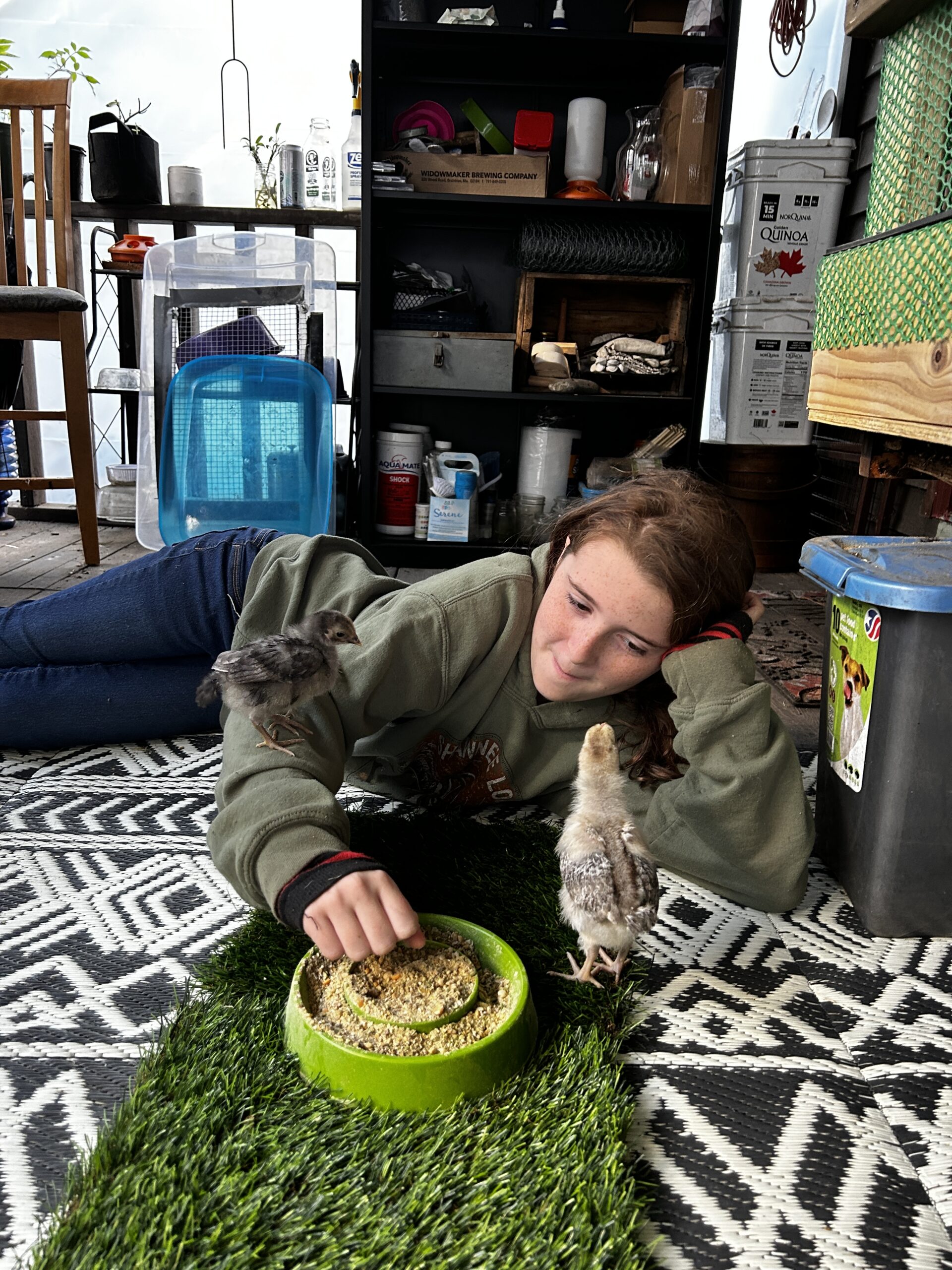
Understanding the Chalaza in an Egg
The chalaza (plural: chalazae) is an essential component of a chicken egg. It consists of two spiral bands of tissue that extend from the yolk's opposite sides to the lining membrane of the egg.
Here's a detailed explanation of what the chalaza is and its functions:
Structure and Appearance
- Location: The chalazae are found inside the egg, attached to the yolk.
- Appearance: They look like twisted, rope-like strands of egg white (albumen). There are two chalazae, one on each end of the yolk.
- Texture: They are firmer than the surrounding egg white, which makes them relatively easy to spot when you crack open an egg.
Functions of the Chalaza
- Stabilization of the Yolk:
- The primary role of the chalaza is to hold the yolk in the center of the egg. This stabilization ensures that the yolk remains suspended within the egg white, protecting it from damage and maintaining its position.
- The spiral structure of the chalazae allows the yolk to rotate while still being held in place, which helps in evenly distributing nutrients and supporting the developing embryo in fertilized eggs.
- Protection of the Embryo:
- In fertilized eggs, the chalazae play a crucial role in keeping the embryo safe. By securing the yolk, they help cushion the developing embryo from external shocks and vibrations.
- The central positioning of the yolk, maintained by the chalazae, ensures that the embryo is surrounded by the nutrient-rich egg white, which provides necessary proteins and water for development.
Culinary Considerations
- Edibility: The chalaza is entirely edible and does not affect the taste or quality of the egg. It is a natural part of the egg's anatomy.
- Removal: Some chefs and bakers prefer to remove the chalazae for aesthetic reasons or to achieve a smoother texture in delicate dishes like custards and sauces. This can be done by straining the egg or using a spoon to scoop out the chalazae.
Fun Fact
- Indicator of Freshness: The visibility of the chalaza can indicate the freshness of the egg. In fresh eggs, the chalazae are more prominent and well-defined. As the egg ages, the chalazae become less noticeable due to the thinning of the egg white.
By understanding the role and structure of the chalaza, you gain a deeper appreciation for the complexity and design of an egg. This knowledge can enhance your culinary practices and provide insight into the fascinating world of avian biology.
Healthy Herb For Chickens: Wheatgrass
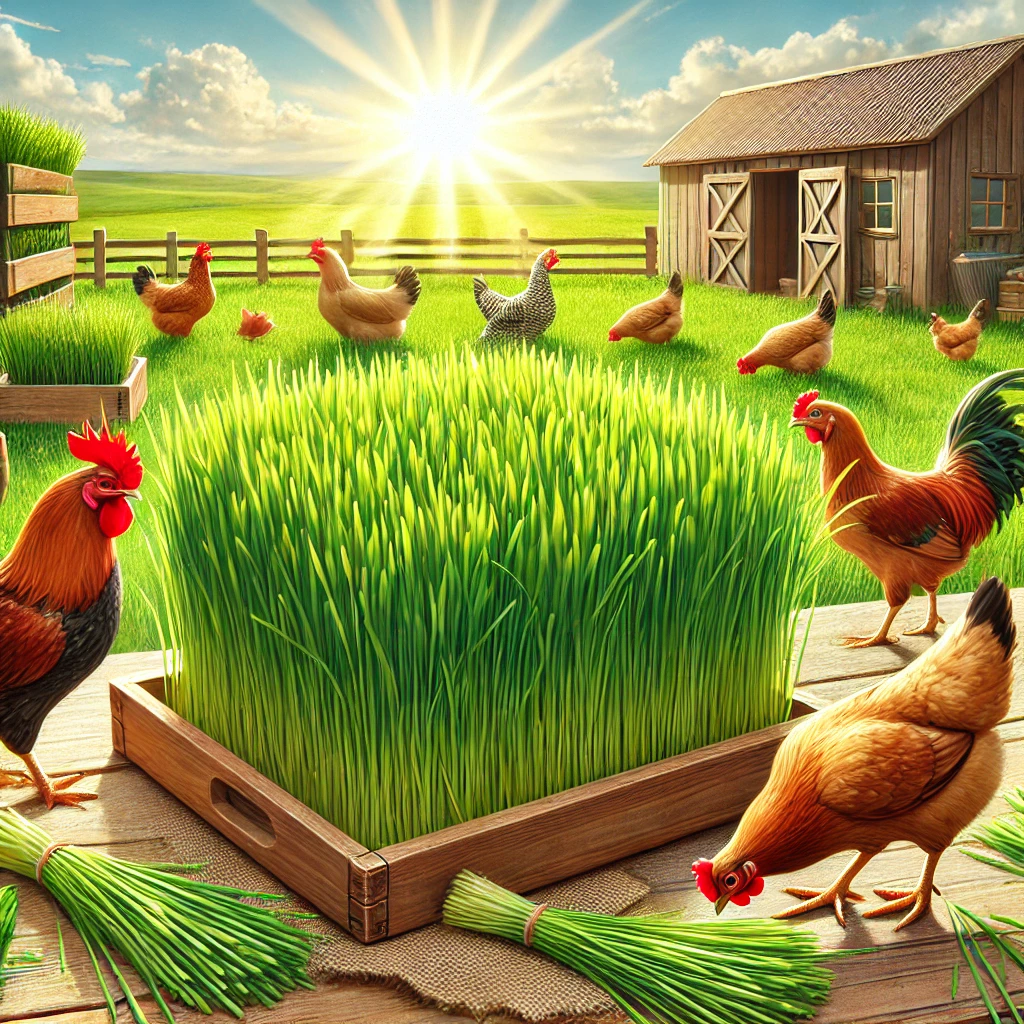
Wheatgrass is a highly nutritious and beneficial addition to your chickens' diet. It can be grown easily and provides a range of health benefits, making it a popular choice for backyard poultry enthusiasts. Here’s a detailed look at why and how to incorporate wheatgrass into your chickens’ diet.
Nutritional Benefits of Wheatgrass
- Rich in Vitamins and Minerals:
- Vitamins: Wheatgrass is an excellent source of vitamins A, C, E, and K. These vitamins are crucial for maintaining healthy skin, feathers, and immune system function.
- Minerals: It contains essential minerals such as calcium, magnesium, iron, and phosphorus, which are vital for bone health and metabolic functions.
- Antioxidants:
- Wheatgrass is packed with antioxidants that help combat oxidative stress and support overall health. This can lead to better egg production and improved feather quality.
- Digestive Health:
- The fiber content in wheatgrass aids in digestion and promotes a healthy gut flora. It can help prevent digestive issues and improve nutrient absorption.
- Detoxification:
- Wheatgrass has natural detoxifying properties that can help cleanse the liver and blood, promoting overall health and vitality in chickens.
Growing Wheatgrass
- Materials Needed:
- Wheatgrass seeds (organic, untreated)
- Growing trays or shallow containers
- Potting soil or hydroponic growing medium
- Water
- Spray bottle
- Steps to Grow Wheatgrass:
- Soak Seeds: Soak the wheatgrass seeds in water for 8-12 hours.
- Prepare Trays: Fill the trays with soil or a hydroponic medium.
- Sow Seeds: Spread the soaked seeds evenly over the surface of the soil.
- Watering: Lightly water the seeds and keep the soil moist but not waterlogged. Use a spray bottle for even distribution.
- Germination: Place the trays in a warm, dark place until the seeds germinate, which usually takes 2-3 days.
- Growth: Once the seeds have sprouted, move the trays to a sunny location or under grow lights. Water daily to keep the soil moist.
- Harvesting: Wheatgrass is ready to harvest when it reaches 6-8 inches in height, usually within 7-10 days. Cut the grass close to the base using scissors.
Feeding Wheatgrass to Chickens
- Preparation:
- Cut the wheatgrass into manageable pieces to prevent choking and ensure easy consumption.
- Serving:
- You can place the cut wheatgrass directly in the chicken run or mix it with their regular feed. It can also be used as a foraging treat, encouraging natural behaviors.
- Frequency:
- Wheatgrass should be given as a supplement to their regular diet. A handful of wheatgrass per chicken, a few times a week, is sufficient.
- Monitoring:
- Observe your chickens to ensure they are eating the wheatgrass and not just playing with it. Adjust the amount based on their consumption and interest.
Benefits for Chickens
- Improved Egg Quality:
- The high nutrient content in wheatgrass can lead to stronger eggshells and richer yolks.
- Enhanced Immune System:
- The vitamins and antioxidants in wheatgrass boost the immune system, helping chickens fend off illnesses.
- Better Feather Condition:
- The nutrients promote healthy feather growth and can help with molting.
- Increased Vitality:
- Regular consumption of wheatgrass can lead to more active and vibrant chickens.
Conclusion
Incorporating wheatgrass into your chickens’ diet is a simple and effective way to enhance their overall health and well-being. It provides essential nutrients, supports digestion, boosts immunity, and promotes better egg production. By growing and feeding wheatgrass regularly, you can ensure your flock stays healthy and happy.
Ice Blocks: Precautions
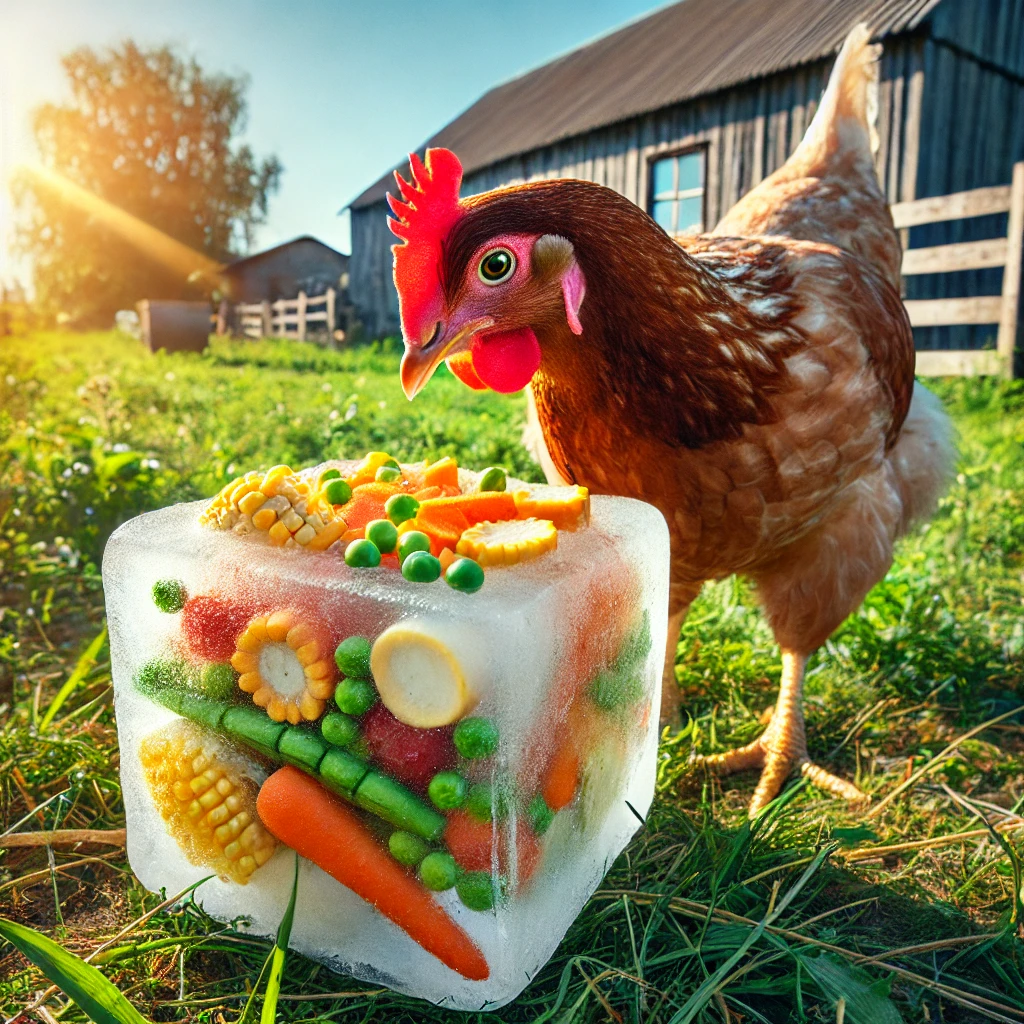
Ice blocks can be a fun and enriching way to help chickens cool down during the summer, but there are some safety considerations to keep in mind:
Potential Risks and Precautions
- Risk of Injury:
- Pecking Injuries: Chickens may peck at the ice too vigorously, potentially injuring their beaks. Ensuring the ice blocks contain small, soft food items can help minimize this risk.
- Slippery Surfaces: Ice can create slippery surfaces, which might lead to slips and falls, especially if the ice melts in the coop or run. Place ice blocks in areas with good drainage and non-slippery surfaces.
- Overcooling:
- Body Temperature Regulation: Chickens regulate their body temperature differently than humans. Direct and prolonged exposure to cold surfaces might lead to overcooling, which can stress their systems. Offer ice blocks intermittently rather than continuously.
- Water Contamination:
- Cleanliness: Melting ice can mix with dirt and droppings, leading to contaminated water. Always place ice blocks in clean areas and monitor them to ensure they do not become a source of dirty water.
- Digestive Issues:
- Ingesting Too Much Cold Water: Rapid consumption of very cold water can potentially cause digestive upsets. Ensure the ice blocks contain small, manageable pieces of food that encourage slow consumption.
Safe Practices for Using Ice Blocks
- Supervision:
- Supervise your chickens when first introducing ice blocks to ensure they interact with them safely and appropriately.
- Size and Composition:
- Small Pieces: Use small food items that are easy for chickens to peck at without risk of injury. Fruits like blueberries, corn kernels, and peas are good options.
- Mixed Ingredients: Include a mix of hydrating fruits and vegetables to ensure balanced nutrition.
- Placement:
- Shaded Areas: Place ice blocks in shaded areas to slow the melting process and keep the surrounding area cooler.
- Secure Surfaces: Ensure the ice blocks are on surfaces that provide good traction and are not prone to becoming slippery when wet.
- Frequency:
- Intermittent Offering: Use ice blocks as an occasional treat rather than a constant feature. This helps prevent potential issues related to overcooling and digestive upsets.
- Monitoring and Cleanliness:
- Regularly check the area where ice blocks are placed to ensure it remains clean and free from excessive water build-up.
By following these safe practices, you can help ensure that ice blocks are a beneficial and enjoyable treat for your chickens during the hot summer months, providing them with much-needed relief and enrichment.
Summer Treat Recipe for Chickens: Frozen Corn and Veggie Ice Blocks
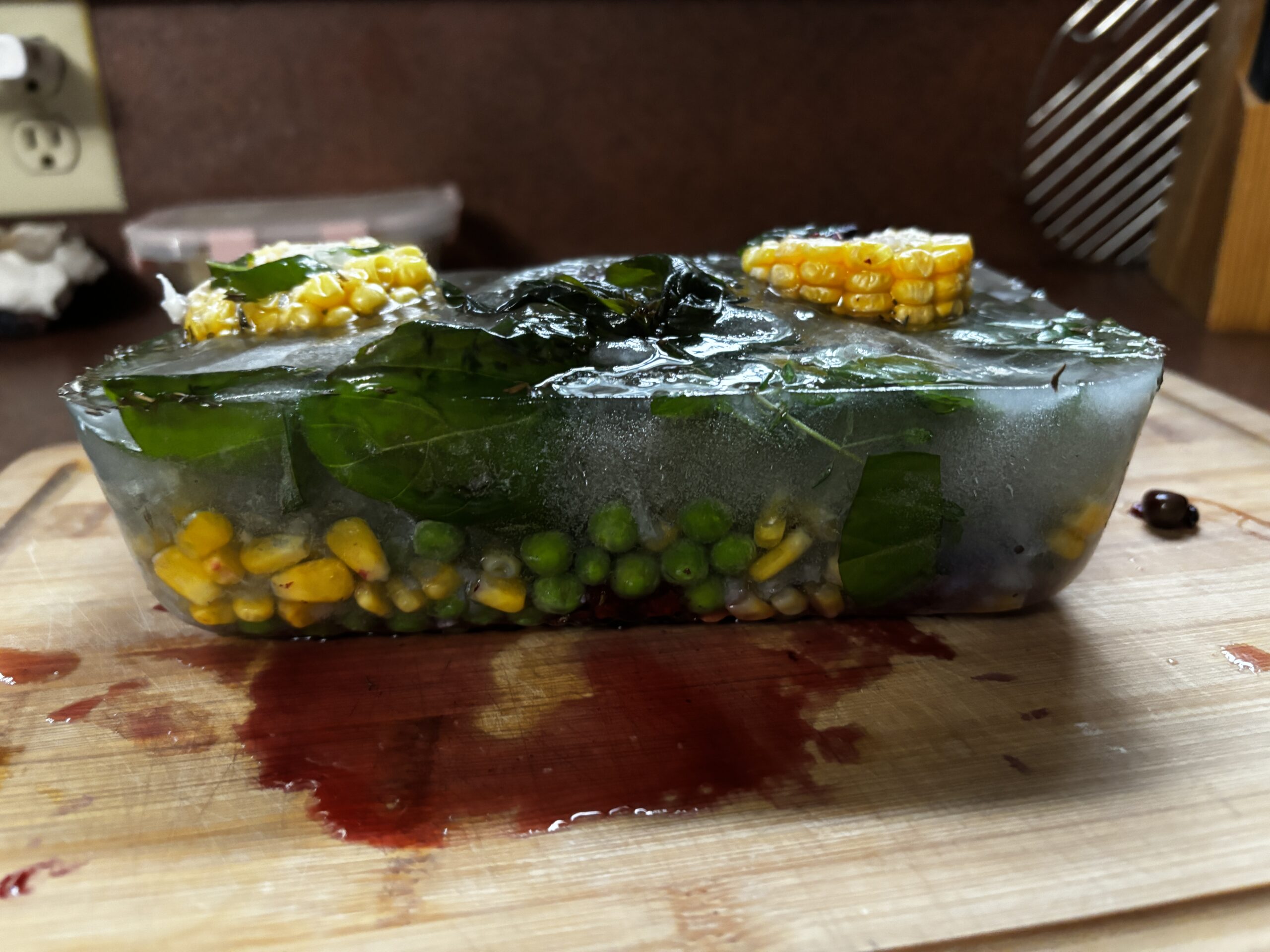
A great way to keep your chickens cool and hydrated during the hot summer months is by making frozen corn and veggie ice blocks. These treats are simple to make and are packed with nutrition and hydration.
Ingredients:
- 1 cup corn kernels (fresh or frozen)
- 1/2 cup peas (fresh or frozen)
- 1/2 cup chopped carrots
- 1/2 cup chopped bell peppers
- 1/4 cup chopped parsley (optional)
- Water
Instructions:
- Combine the Ingredients:
- In a large mixing bowl, combine the corn, peas, carrots, bell peppers, and parsley. Mix them well to ensure an even distribution of vegetables.
- Prepare the Molds:
- Take a silicone muffin tray, ice cube tray, or any shallow plastic container that can be frozen. Fill each compartment with the vegetable mixture.
- Add Water:
- Pour water over the vegetable mixture in each compartment, ensuring the veggies are well-covered but not overflowing. Leave a little space at the top to allow for expansion when the water freezes.
- Freeze:
- Place the filled trays or containers in the freezer. Allow them to freeze completely, which should take a few hours or overnight.
- Serve:
- Once frozen, remove the ice blocks from the trays or containers. You can run warm water over the back of the tray to help release the blocks if they stick.
- Serve the frozen corn and veggie ice blocks to your chickens in their run or shaded areas. They will peck at the ice blocks, enjoying the cool treat and staying hydrated in the process.
Tips:
- Supervision: It’s a good idea to supervise your chickens when first introducing them to the ice blocks to ensure they are enjoying the treat and staying safe.
- Variations: Feel free to experiment with other vegetables and herbs that are safe for chickens, such as zucchini, cucumbers, or mint.
This frozen corn and veggie ice block treat not only helps to keep your chickens cool but also provides them with a fun and enriching activity. Happy chickens are healthy chickens, and this treat is sure to be a hit with your flock during the hot summer months.
NOTES:
- Corn is a high-energy food and should be fed in moderation during the summer. Click here to learn more.
- As with anything new, here are some extra precautions to take when using ice-block treats.
Feeding Corn in the Summer: Precautions
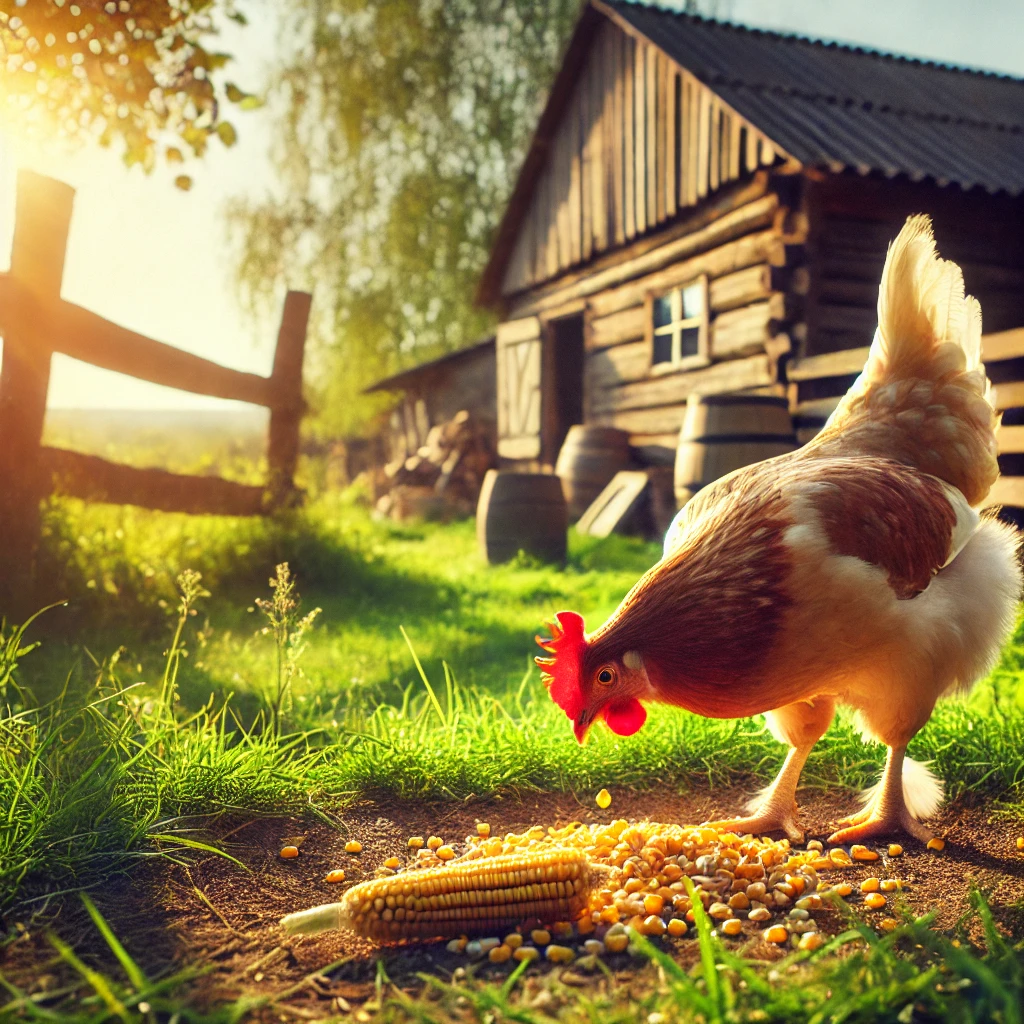
Corn can be a good treat for chickens, but there are considerations to keep in mind, especially during the summer. Here’s a detailed look at the benefits and best practices for feeding corn to chickens in the heat.
Benefits of Corn for Chickens
- Energy-Rich: Corn is a high-energy food that provides chickens with the carbohydrates they need for energy.
- Palatability: Chickens generally enjoy the taste of corn, making it a good treat for keeping them interested and engaged.
Considerations for Feeding Corn in the Summer
- Heat Production: Corn is high in carbohydrates, which can increase the metabolic heat produced by chickens as they digest it. This can be counterproductive in hot weather as it can add to the heat stress.
- Moderation: During the summer, it’s best to feed corn in moderation. Providing too much corn can lead to overheating and discomfort for your chickens.
Best Practices for Feeding Corn in the Summer
- Timing: Offer corn in the cooler parts of the day, such as early morning or late evening. This helps minimize the risk of added heat stress during the hottest parts of the day.
- Hydration: Ensure that your chickens have constant access to fresh, cool water. This is particularly important when feeding them high-energy treats like corn.
- Balance: Mix corn with other hydrating treats. Combining corn with water-rich vegetables like cucumbers, zucchini, or watermelon can help balance the diet and provide necessary hydration.
- Frozen Treats: Consider incorporating corn into frozen treats. Freezing corn with water and other veggies can create a cooling and hydrating treat for your chickens. This method also encourages pecking and foraging behavior, keeping them entertained.
Homemade Chicken Electrolytes

Providing an electrolyte solution for your chickens during hot weather, illness, or periods of stress can help maintain their health and hydration.
Here’s a reliable recipe to keep your flock healthy:
Ingredients:
- 1 quart (4 cups) of water
- 2 teaspoons of sugar (or honey)
- 1/8 teaspoon of baking soda
- 1/8 teaspoon of table salt
- 1/8 teaspoon of potassium chloride (optional, available as a salt substitute)
Instructions:
- Prepare the Water: Use warm water to help dissolve the ingredients more easily.
- Mix the Ingredients:
- Add 2 teaspoons of sugar (or honey) to the water and stir until dissolved.
- Add 1/8 teaspoon of baking soda and stir until dissolved.
- Add 1/8 teaspoon of table salt and stir until dissolved.
- Add 1/8 teaspoon of potassium chloride if using, and stir until dissolved.
- Cool the Solution: Let the solution cool to room temperature before offering it to your chickens.
- Serve to Chickens: Provide the electrolyte solution in a clean water dispenser. Ensure it's the only water source available for a few hours each day during periods of stress or heat.
When to Use Electrolytes:
- Heat Stress: Helps prevent dehydration during hot weather.
- Illness or Diarrhea: Aids in recovery by maintaining hydration levels.
- Stressful Events: Useful during predator attacks, traveling, or molting.
- Weak or Ailing Chicks: Supports young chicks during their first few days or if they appear weak.
Tips:
- Freshness: Make a fresh batch daily to ensure its effectiveness.
- Storage: The dry mixture can be stored in a cool, dry place, but the prepared solution should be discarded at the end of the day.
Electrolytes play a critical role in maintaining fluid balance, muscle function, and overall health in chickens, especially during challenging conditions. By providing a homemade electrolyte solution, you can help your flock stay healthy and hydrated.
Click here to learn more about feeding your flock in the summer heat.
Feeding Chickens In Summer Heat
